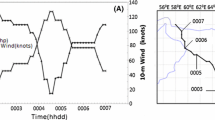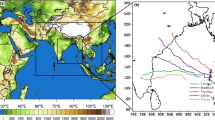In this study, the sensitivity of numerical simulations of tropical cyclones to physics parameterizations is carried out with a view to determine the best set of physics options for prediction of cyclones originating in the north Indian Ocean. For this purpose, the tropical cyclone Jal has been simulated by the advanced (or state of science) mesoscale Weather Research and Forecasting (WRF) model on a desktop mini super computer CRAY CX1 with the available physics parameterizations. The model domain consists of one coarse and two nested domains. The resolution of the coarse domain is 90 km while the two nested domains have resolutions of 30 and 10 km, respectively. The results from the inner most domain have been considered for analyzing and comparing the results. Model simulation fields are compared with corresponding analysis or observation data. The track and intensity of simulated cyclone are compared with best track estimates provided by the Joint Typhoon Warning Centre (JTWC) data. Two sets of experiments are conducted to determine the best combination of physics schemes for track and intensity and it is seen that the best set of physics combination for track is not suitable for intensity prediction and the best combination for track prediction overpredicts the intensity of the cyclone. The sensitivity of the results to orography and level of nesting has also been studied. Simulations were also done for the cyclone Aila with (i) best set of physics and (ii) randomly selected physics schemes. The results of the Aila case show that the best set of physics schemes has more prediction skill than the randomly selected schemes in the case of track prediction. The cumulus (CPS), planetary boundary layer (PBL) and microphysics (MP) parameterization schemes have more impact on the track and intensity prediction skill than the other parameterizations employed in the mesoscale model.















Similar content being viewed by others
References
Deshpande M, Pattnaik S and Salvekar P 2010 Impact of physical parameterization schemes on numerical simulation of super cyclone Gonu; Natural Hazards 55(2) 211–231.
Krieger J 2009 Sensitivity of WRF model forecasts to different physical parameterizations in the Beaufort Sea region; In: Eighth Conference on Coastal Atmospheric and Oceanic Prediction and Processes in Phoenix, AZ, January 12–15.
Laprise R 1992 The Euler equation of motion with hydrostatic pressure as an independent variable; Mon. Weather Rev. 120(1) 197–207.
Loh W, Juneng L and Tangang F 2010 Sensitivity of Typhoon Vamei (2001) simulation to planetary boundary layer parameterization using PSU/NCAR MM5; Pure Appl. Geophys. 168(10) 1799–1811.
Mandal M, Mohanty U and Raman S 2004 A study on the impact of parameterization of physical processes on prediction of tropical cyclones over the Bay of Bengal with NCAR/PSU mesoscale model; Natural Hazards 31(2) 391–414.
Ooyama K 1990 A thermodynamic foundation for modeling the moist atmosphere; J. Atmos. Sci. 47(21) 2580–2593.
Pattnaik S and Krishnamurti T 2007 Impact of cloud microphysical processes on hurricane intensity. Part 2: Sensitivity experiments; Meteorol. Atmos. Phys. 97(1) 127–147.
Prater B and Evans J 2002 Sensitivity of modeled tropical cyclone track and structure of Hurricane Irene (1999) to the convective parameterization scheme; Meteorol. Atmos. Phys. 80(1) 103–115.
Rao D and Prasad D 2007 Sensitivity of tropical cyclone intensification to boundary layer and convective processes; Natural Hazards 41(3) 429–445.
Skamarock W 2008 A description of the Advanced Research WRF version 3; NCAR Tech. Note NCAR/TN-475+ STR.
Skamarock W and Klemp J 2008 A time-split nonhydrostatic atmospheric model for weather research and forecasting applications; J. Comput. Phys. 227(7) 3465–3485.
Srinivas C, Venkatesan R, Bhaskar Rao D and Hari Prasad D 2007 Numerical simulation of Andhra severe cyclone (2003): Model sensitivity to the boundary layer and convection parameterization; Pure Appl. Geophys. 164(8–9) 1465–1487.
Yang M and Ching L 2005 A modeling study of Typhoon Toraji (2001): Physical parameterization sensitivity and topographic effect; Terr. Atmos. Ocean. Sci. 16 177–213.
Author information
Authors and Affiliations
Corresponding author
Rights and permissions
About this article
Cite this article
CHANDRASEKAR, R., BALAJI, C. Sensitivity of tropical cyclone Jal simulations to physics parameterizations. J Earth Syst Sci 121, 923–946 (2012). https://doi.org/10.1007/s12040-012-0212-8
Received:
Revised:
Accepted:
Published:
Issue Date:
DOI: https://doi.org/10.1007/s12040-012-0212-8




